It’s all uphill from here: creative landscaping solutions for sloping backyards
Written by
04 May 2022
•
8 min read

While level backyards are easier to work with than those on sloping sites, creative landscaping can turn even the steepest of blocks into veritable works of art.
“I find a sloped garden far more exciting to design rather than a level square block,” Matthew Sears, director at Rich Earth, tells ArchiPro. “An interesting sloped garden has that natural structure, which you just can’t achieve on level ground; a garden like this will naturally give you ideas and inspiration to create something special.”
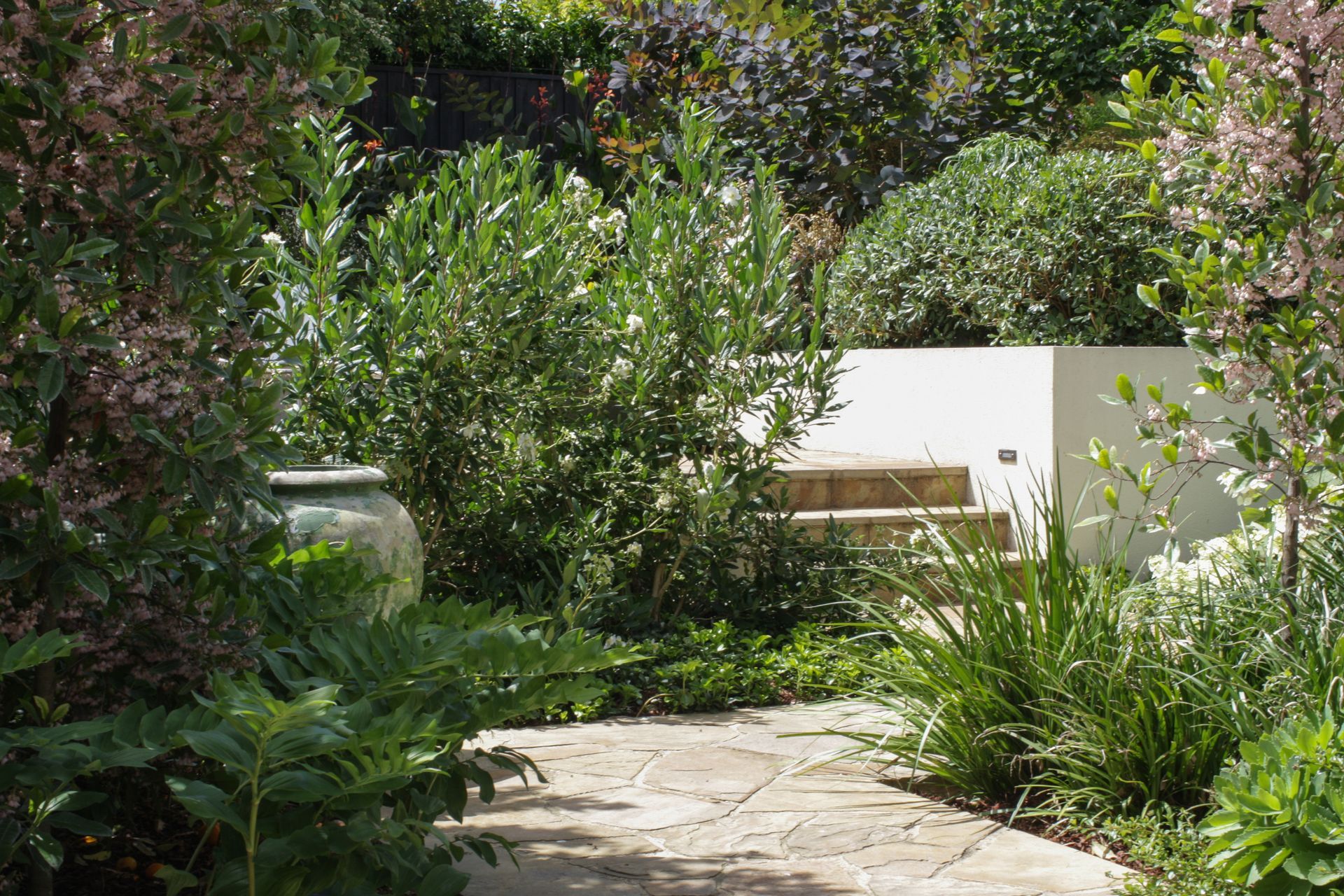
The challenge of sloping backyards
“A sloping backyard in a residential home can present a number of issues, and the most common one is usability,” says Matthew Sears. “A garden on a steep incline reduces the ability for the owners to have a suitable entertaining area or play area for children or even a nice place to sit.”
Gardens and backyards on sloped sites also run the risk of being neglected due to poor accessibility, he says. “A garden that is difficult to garden in will often result in a mass of unloved beds full of weeds that are doing nothing to enhance the space and the surrounding environment.”
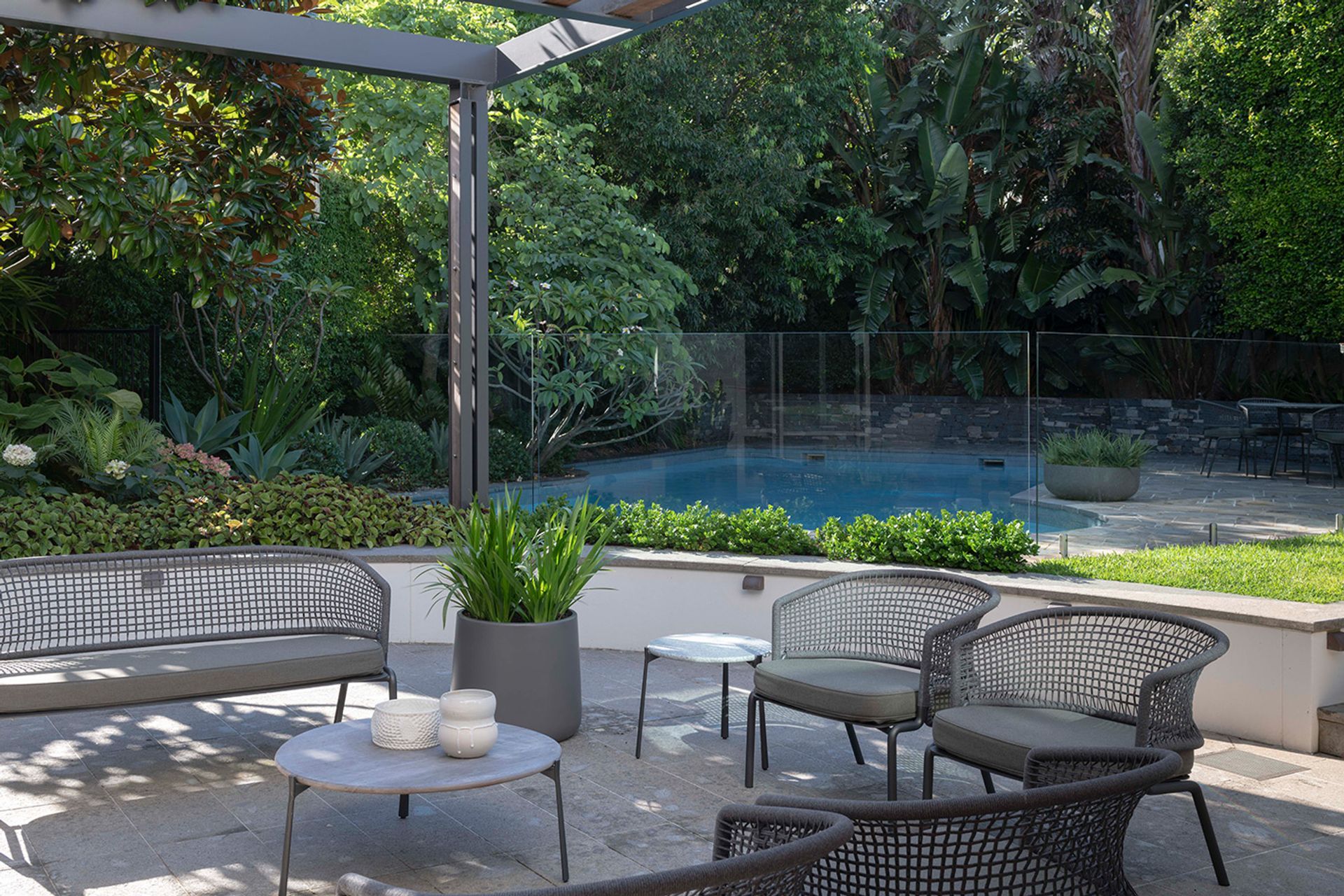
From a maintenance perspective, an unmanaged steeply sloped garden can also cause myriad issues for both the garden and house. “A slope that falls to the house will send water into and around the home if adequate drainage is not considered, and this can obviously risk damage to the home,” the landscape gardener explains. “Soil erosion is another issue to be considered as this can destabilise the slope in sections, making the garden a dangerous place to be, especially if it is one with a lot of rock in its makeup.”
Matthew also emphasises the importance of considering accessibility to the site before embarking on your landscaping journey. “There is no point designing aspects into the garden that are not practical to implement due to the restrictions of the sloping ground,” he says. “From there the design process should be basically the same as any garden, [taking into consideration] what owner wants and needs from the space, how will people move around the space (a key consideration with a sloped site), what’s the most appropriate planting, and does any retaining work need to be done.”
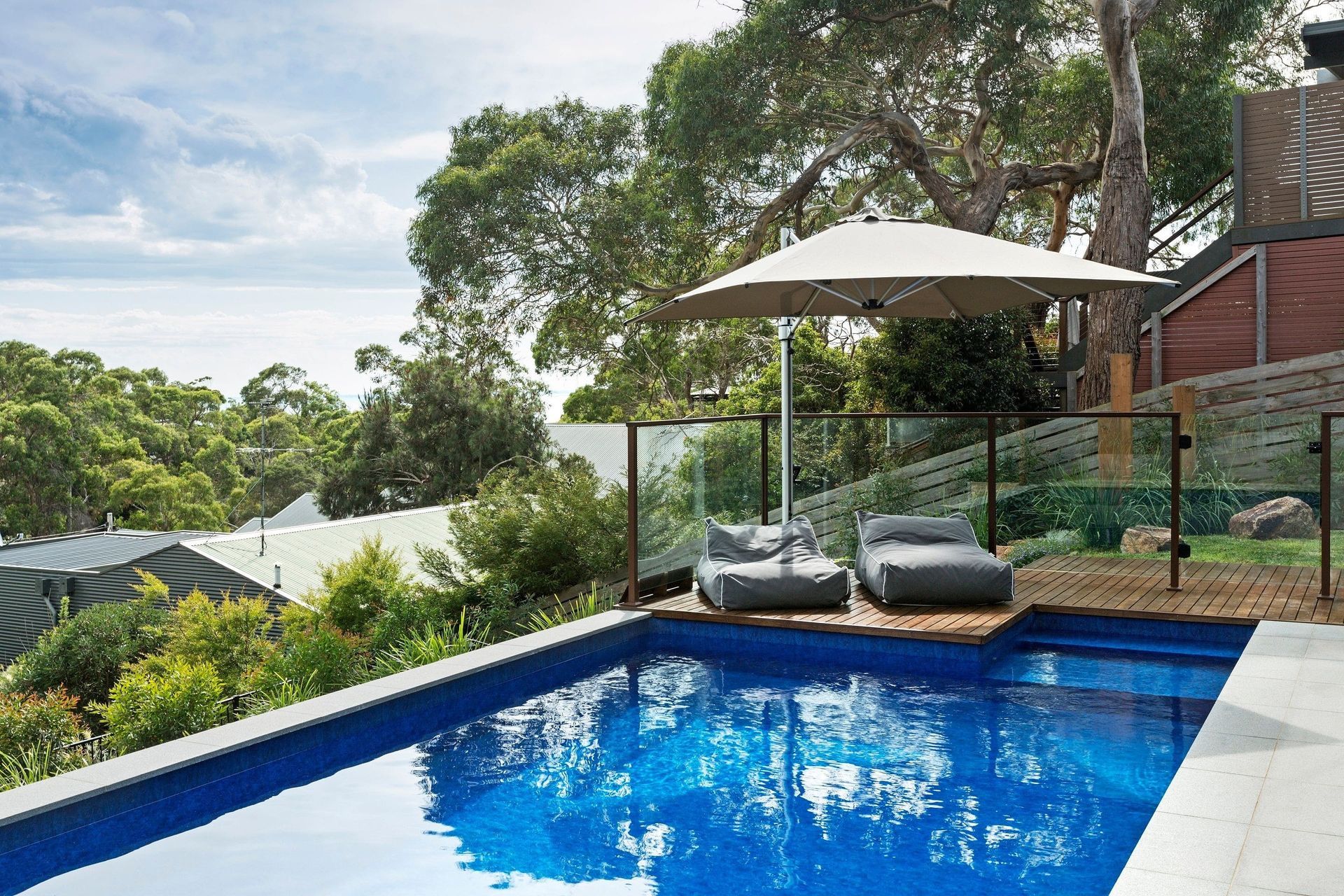
What to consider when landscaping a sloped backyard
According to landscape designer Anthony Scott, the key focus when designing any garden should be to create a highly aesthetic space with good function and proportion. “For a sloped site, the objective is still the same,” Anthony says. “It just means that extra consideration needs to be given to the transition between lower and higher levels.”
Landscape designer Andy Murray says it’s important to devise solutions that don’t impinge on the garden or backyard’s ability to be used for its inherent purpose. If supporting structures are required, such as pergolas or decks, it’s essential the garden isn’t dominated by the structure, and that generous usable areas are retained.
For more complex projects, Matthew Cantwell, creative director at Secret Gardens, says an engineer and potentially a geotechnical engineer may need to be consulted.
“Run-off and erosion is always an important factor,” he says. “It is key to understand how the watercourse will be interrupted [and decide whether] we will slow it down and retain on the embankment for the benefit of plants (preferably) or collect and distribute into the stormwater system.”

Retaining walls
Anthony says retaining walls play a key role in developing a smoother transition between high and low. “Natural stone and rendered walls can be a beautiful inclusion to any garden,” he says. "The only downfall is that they can really stretch the budget and in a lot of cases limit the amount of planting you can bring into the space. This is due to the underground concrete footings of the walls, which can make planting a nightmare.”
Without the right balance of plant life, an environment can be overpowered by too many hard masonry surfaces, Anthony cautions. To avoid this, he recommends using concrete sleeper retaining walls. “Whilst these types of walls can be a bit harsh to look at, they can be easily disguised with plantings, which will bring additional plant life to the landscape,” he explains. “A concrete sleeper wall is generally more cost-effective to build, which will also help conserve some of the all-important budget.”
It can also pay to get creative with retaining walls, with Matthew Sears from Rich Earth proposing that the ideal solution isn’t always a singular wall. “We try to use retaining walls in a thoughtful way,” he says. “It is most often more aesthetically pleasing to have several smaller walls splitting the garden up into pockets than having one giant wall and everything on one level.”
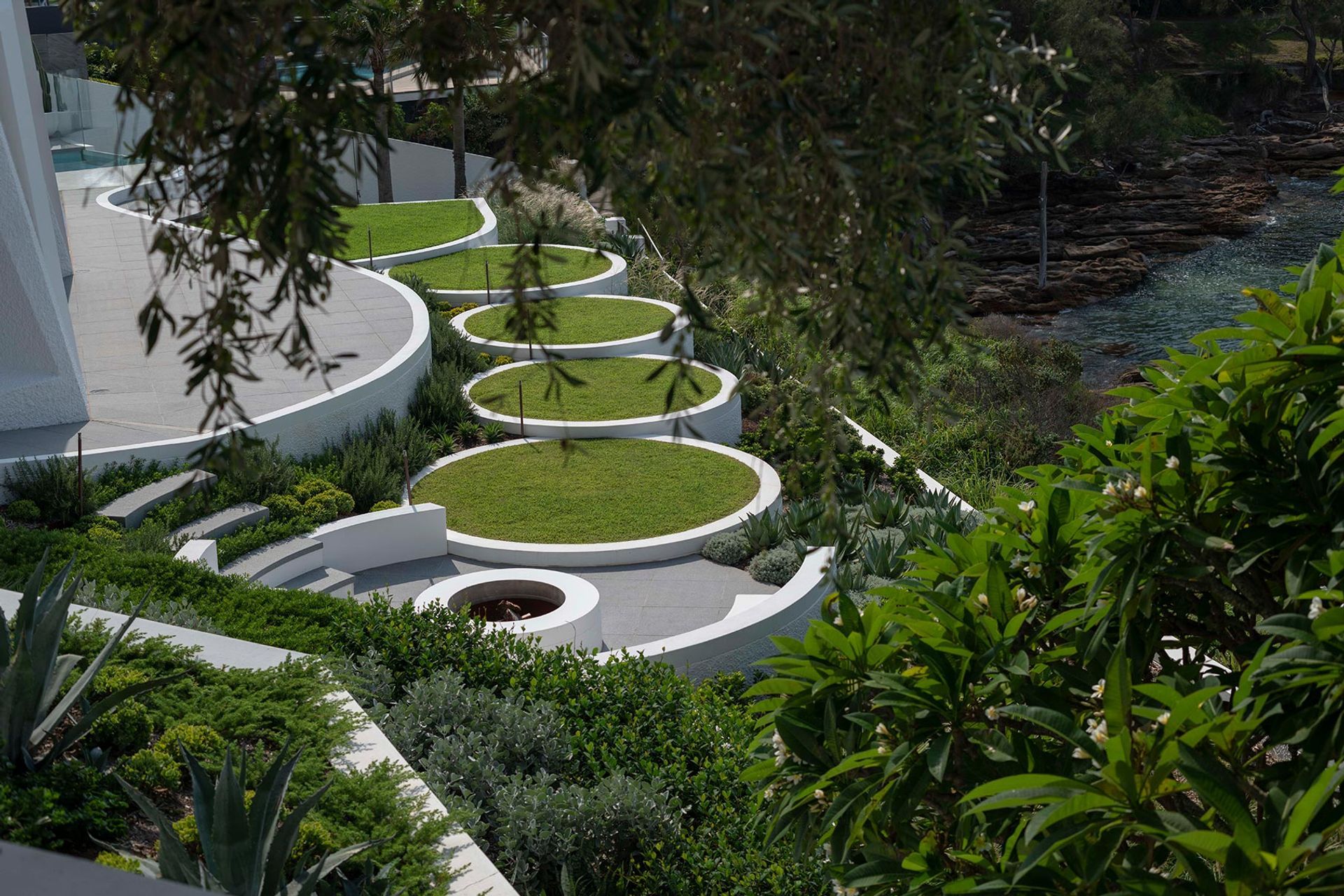
Stairway to heaven
Sometimes the most obvious solutions can also make the most visual impact. “Stairs give you so many fabulous options to get creative,” says Matthew Sears. “The styles and materials available are almost limitless, so there is an option to suit every budget and style.”
Steps can make it easier for homeowners to access lower-level garden beds or as a way to link spaces that would otherwise be inaccessible or neglected. “More often than not, there can be situations where the areas furthest away from your house never get used, as it’s either too much of a chore to get to or there is nothing drawing you to these parts of the garden in the first place,” says Anthony. “With this in mind, it really pays to make the journey through the garden as easy as possible. Rather than having a steep flight of steps, if you can limit the steps where possible and space them out a little more, this can provide a more enjoyable transition from one level to the next.”
Matthew Cantwell notes that masonry products can get expensive, recommending materials like timber and steel as cost-effective alternatives not only for decking but also for walkways and steps.

Decked out
For backyards that slope down from the house, a deck can serve double duty as both a space to entertain and as means of opening up views to the garden and surrounding landscape. Anthony notes that if a steep slope causes your decked area to be perched at too high an elevation, privacy issues with the neighbours can be dealt with by considering decorative screening options or strategic plantings.
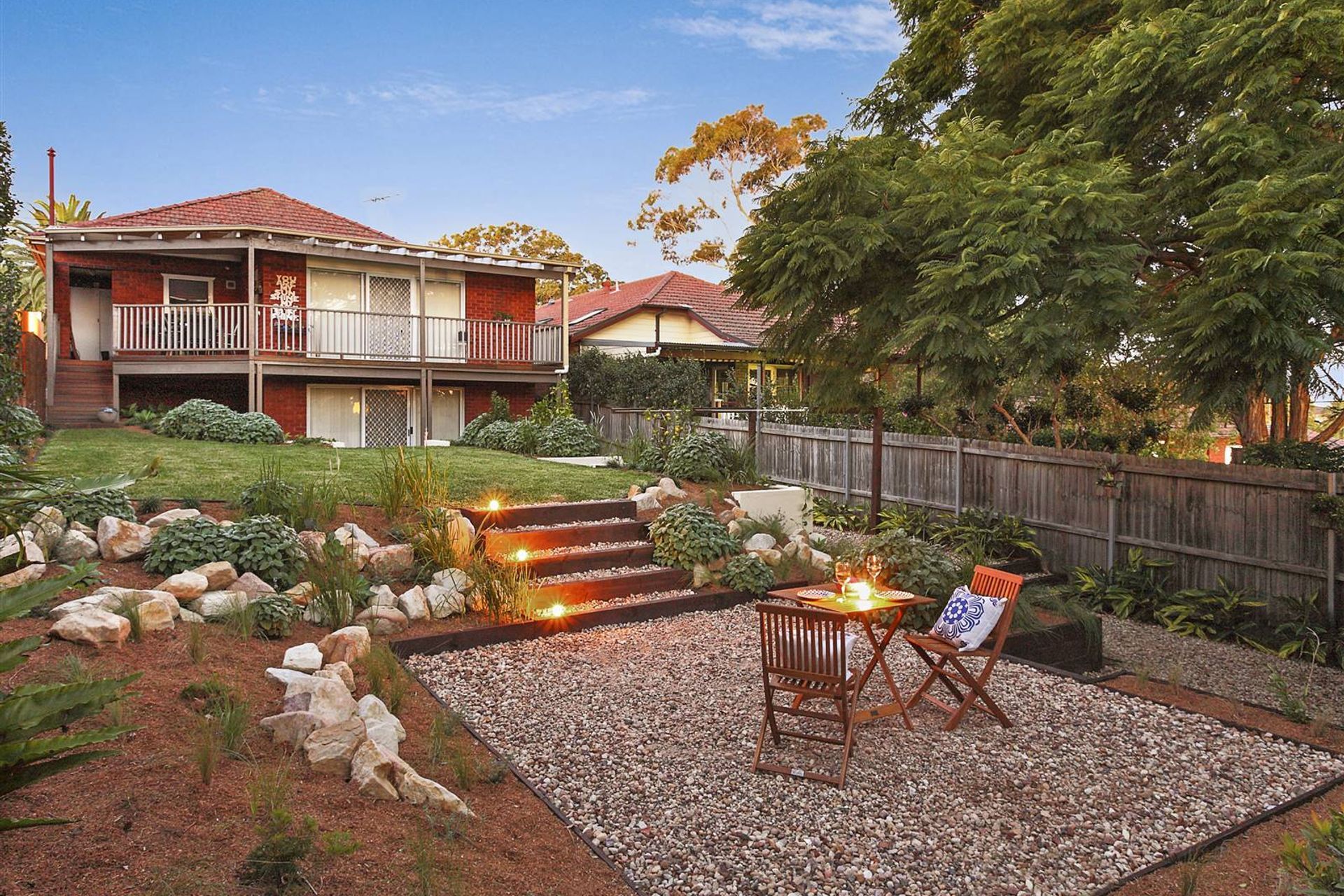
Room with a view
Shirking staid notions of what a backyard should look like, Matthew Sears suggests creating outdoor ‘rooms’ to provide a backyard or garden with an increased sense of space and interest. “In a sloped garden, creating terraces is the perfect use of this concept as each terrace will inevitably feel like its own little world and a set of stairs going between them is always going to feel like an adventure.”
In line with this approach, Anthony recommends putting together a space replete with visual interest at every turn. “Positioning points of interest along the way will also entice you to venture further into the garden,” he explains. “A feature urn, some arbour beams or a simple bench seat are great ways to make this happen. Functional spaces like a firepit area, lounging deck or a kitchen garden are fantastic ways to utilise some of these areas as well.”
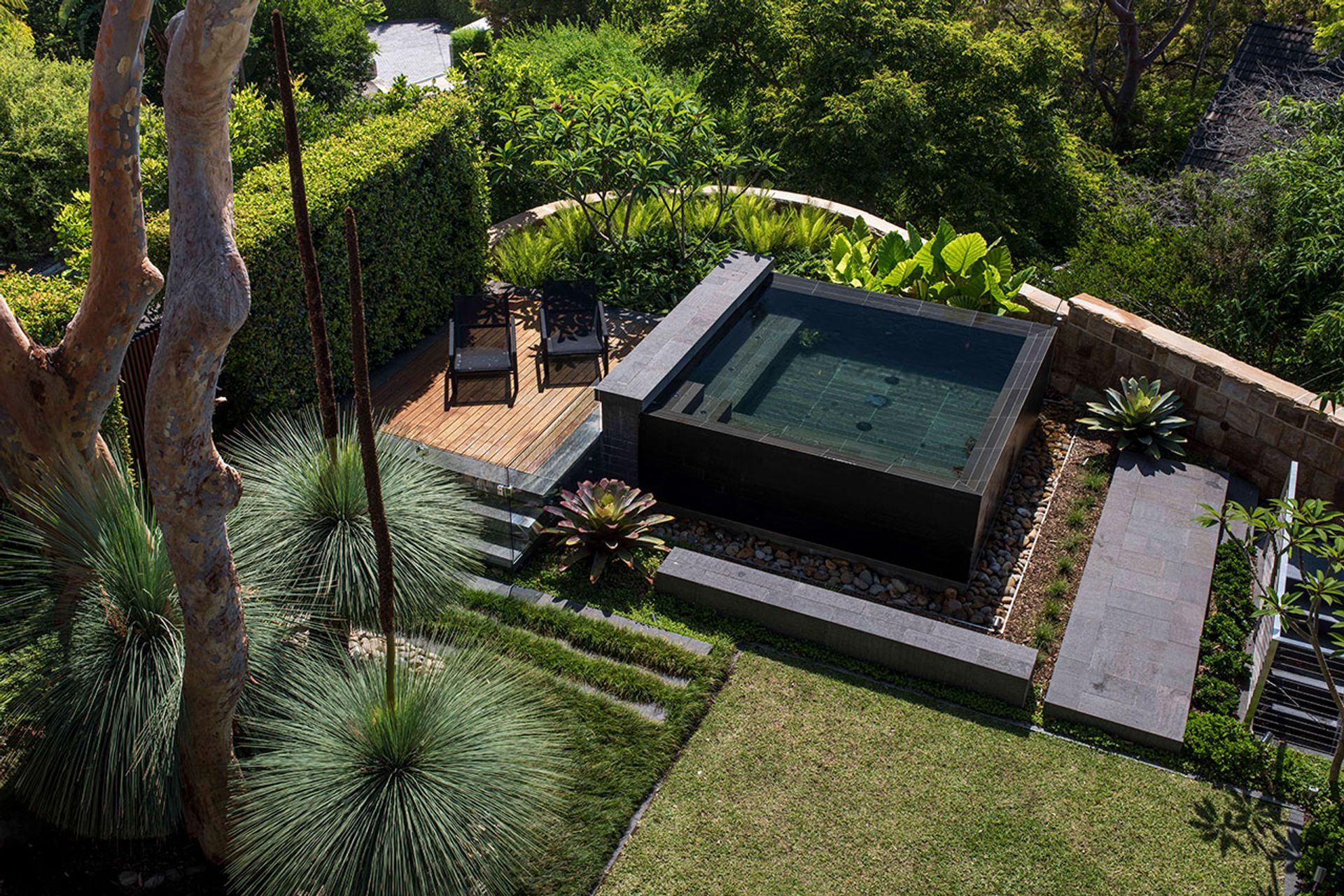
Make a splash
“If you are thinking of installing a pool, a sloping block can provide an amazing opportunity to create a pool with plenty of wow factor,” says Anthony. “Negative edge or glass edge pools both provide an extra design element, whilst an above-ground plunge pool can also provide a real feature in a smaller space.”

Purposeful planting
The right plants not only add aesthetic appeal to your backyard or garden, but also work to anchor loose soil to a flowerbed and prevent soil erosion. “Plants in general will help with soil erosion due to the root ball being able to keep soil intact,” explains Anthony. “Using groundcovers is a great way to limit erosion on a steep slope. Choosing a hardy vigorous option will ensure a fast cover rate, and will also help to suppress weeds, keeping the maintenance down.”
In particular, landscape designer Cory Webb recommends the native grass Lomandra tanika which can increase an embankment's soil holding capacity fourfold.
"When it comes to planting options on a sloped site, focus on native grasses that bind well to the soil and prevent erosion," says Cory. "If you wish to plant something that will be clipped such as the cloud-shaped Indian hawthorn (Rhaphiolepis indica) or Japanese box (Buxus microphylla), make sure you can still access the plant to keep it in shape while working on the slope. Of course, if you choose to terrace a part of your sloped site, you can plant whatever you like provided that it grows well in that particular climate."
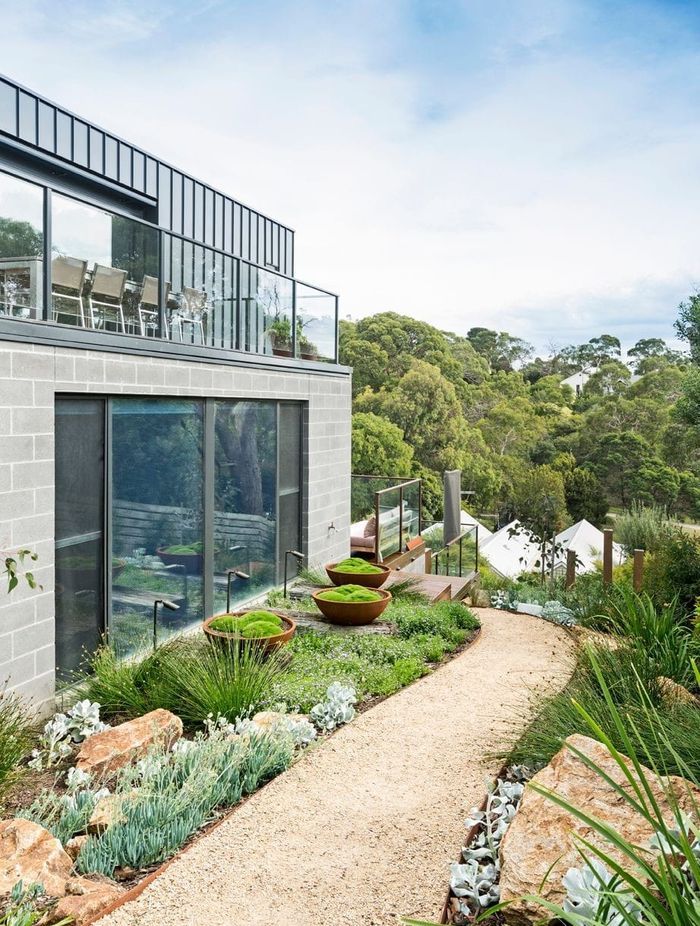
As for styling, Anthony recommends having plants cascade over the edge of retaining walls to create a striking effect and soften the aesthetic of the masonry. “Having a slope in the garden can be a real feature,” he adds. “Layering your plants using smaller options at the lower end then gradually increasing the size as you work your way up will help accentuate the gradient and help showcase each plant.”
Words by Tanisha Angel